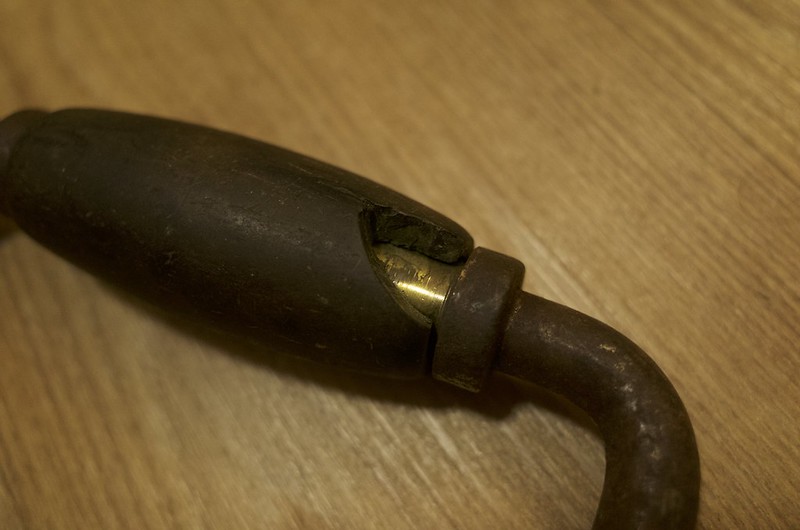Rhyolith
Established Member
Finally got a North Brothers brace, wanted one of these for a while 
 "Yankee" Brace by Rhyolith, on Flickr
"Yankee" Brace by Rhyolith, on Flickr
Anyway as you can see there is a chuck missing from the central handle. Its not wood but a bakelite like stuff.
 "Yankee" Brace (chunk out of handle) by Rhyolith, on Flickr
"Yankee" Brace (chunk out of handle) by Rhyolith, on Flickr
Any ideas how to fill in the hole without jamming the rotation?
 "Yankee" Brace by Rhyolith, on Flickr
"Yankee" Brace by Rhyolith, on FlickrAnyway as you can see there is a chuck missing from the central handle. Its not wood but a bakelite like stuff.
 "Yankee" Brace (chunk out of handle) by Rhyolith, on Flickr
"Yankee" Brace (chunk out of handle) by Rhyolith, on FlickrAny ideas how to fill in the hole without jamming the rotation?

































